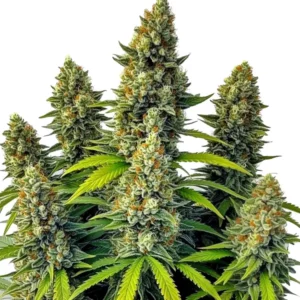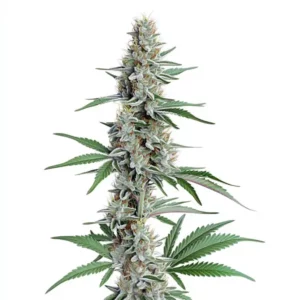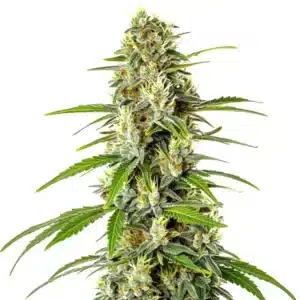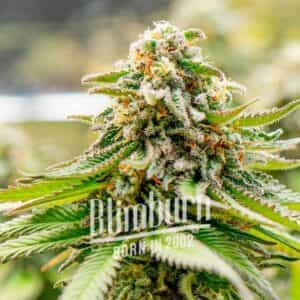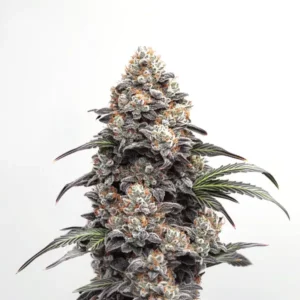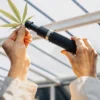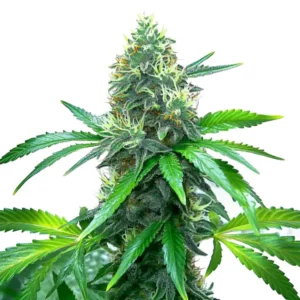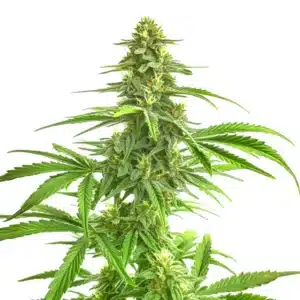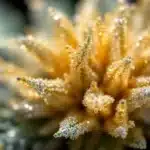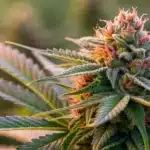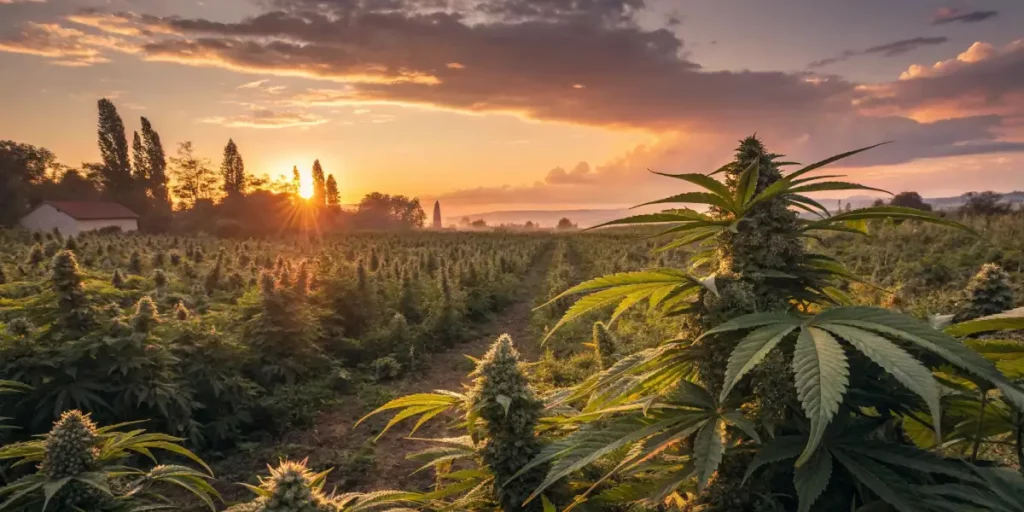
Trichomes and Terpenes: The Heart of Cannabis Aroma and Potency
When exploring terpenes vs trichomes, it’s important to understand how these two elements work together to define a plant’s aroma, flavor, and potency. Terpenes are the aromatic chemical compounds that give plants their unique smells and flavors, while trichomes are the tiny, mushroom-shaped, crystal-like glands that produce and store these terpenes, along with cannabinoids, on plants like cannabis. In essence, trichomes are the structures, and terpenes are the valuable compounds they secrete.
Trichomes are like tiny factories producing terpenes and cannabinoids. Terpenes, on the other hand, are like the unique scent and flavor ‘fingerprints’ of each cannabis strain. These two components work together to create the diverse range of experiences offered by different cannabis strains.
Recommended Strains
Chemdog Auto
|
|
THC | 18% - 20% (Medium) |
|
|
Type | Autoflowering |
|
|
Yield | Low |
|
|
Phenotype | 60% Indica / 40% Sativa |
Chemdog Regular
|
|
THC | 17% - 24% (Medium) |
|
|
Type | Regular |
|
|
Yield | High |
|
|
Phenotype | 60% Indica / 40% Sativa |
Why Trichomes and Terpenes Matter
The value of trichomes and terpenes goes beyond their contribution to sensory appeal. They play a critical role in the plant’s survival. The plant produces these terpenes and strong odors as a natural defense mechanism to protect itself from animals and insects that could otherwise destroy it. More importantly for users, they are key to the plant’s therapeutic and psychoactive properties.
For instance, linalool, a common terpene in cannabis, is known for its calming effects. Myrcene, found in strains like OG Kush, is associated with sedative properties. Terpenes also interact with cannabinoids in a phenomenon known as the ‘entourage effect,’ enhancing the plant’s overall therapeutic effects.
Promos & Deals
The Intricate Relationship between Trichomes and Terpenes
Trichomes and terpenes are closely connected. As the cannabis plant matures, trichomes go from a clear to a milky white or amber color, signaling the peak of terpene and cannabinoid production. This is the best time to harvest. Environmental factors like light, temperature, and humidity can also influence their production.
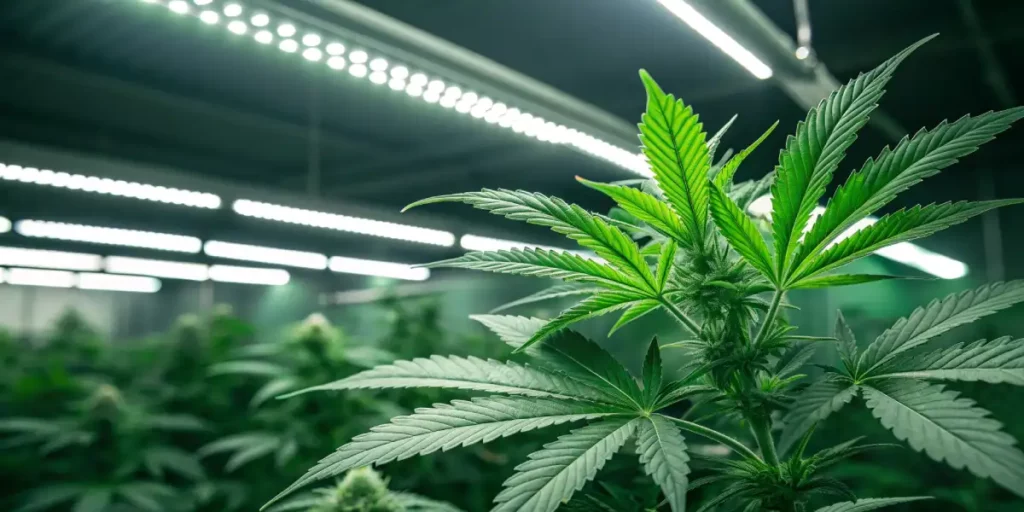
Boosting Trichomes and Terpenes in Your Cannabis Plants
With the right techniques, you can improve both the quantity and quality of these compounds. Firstly, consider the genetics of your seeds. Strains with a reputation for high trichome and terpene production, like Gorilla Glue 4 and Gelato, are a good starting point.
Secondly, providing optimal growing conditions is key. This includes maintaining the pH of your irrigation water at a consistent 6.0, which is important for the plant to have the stability needed to develop the maximum amount of terpenes and trichomes.
The growing environment itself also plays a major role. Indoor plants tend to retain many more terpenes because they are protected from the elements. In an outdoor grow, it is crucial to protect your plants from intense rain, storms, and strong winds, as these harsh conditions can physically strip the delicate trichomes and flavonoids from the flowers.
Stress techniques like low-stress training (LST) can also be employed to promote trichome production by exposing more bud sites to light.
Extracting Trichomes and Terpenes from Cannabis
Extracting these compounds allows you to enjoy them in a concentrated form. There are several methods, from simple dry sifting to using solvents or heat and pressure (rosin).
A fundamental principle for most high-quality extractions is to use cold temperatures. Resin degrades with heat (starting around 40°C or 104°F), which changes its molecular structure and destroys terpenes. By keeping the plant material as cold as possible, ideally 4°C (39°F) or even frozen, the trichomes become brittle and break off much more easily and cleanly. This is the science behind ice water hash (bubble hash).
Regardless of the extraction method, it’s crucial to handle the plant material gently to avoid damaging the fragile trichomes and to store the extracts properly in airtight containers, away from light and heat.
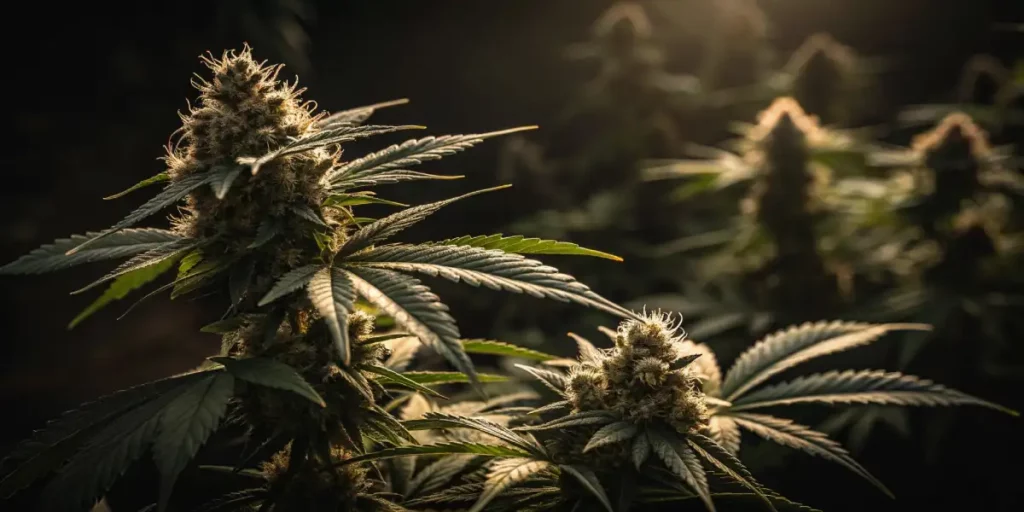
FAQs
What are the health benefits of trichomes and terpenes?
Trichomes are the source of cannabinoids like THC and CBD, which have various therapeutic properties. Terpenes, like myrcene and linalool, have their own health benefits, including anti-inflammatory and calming effects. Together, they create the ‘entourage effect,’ enhancing the plant’s overall therapeutic potential.
How can I increase trichomes and terpenes in my plants?
Start with good genetics. Provide optimal growing conditions, including the right balance of light, temperature, humidity, and nutrients. Maintaining a consistent water pH of 6.0 is crucial. Cooler night temperatures during flowering can also enhance production.
How can I extract trichomes and terpenes from cannabis?
Common methods include dry sifting, making ice water hash, and using a rosin press. The key to preserving quality during extraction is to keep the plant material very cold, as heat degrades these delicate compounds.
What is the best time to harvest for high terpene content?
The best time to harvest depends on your desired effect. For maximum THC and a more energetic high, harvest when most trichomes have turned from clear to a milky white color. However, for a more sedative, body-focused effect, many growers prefer to wait until about half of the trichomes have turned a deep amber color.
What factors influence terpene production in cannabis?
Genetics is the primary factor. Environmental conditions like light (especially UV-B), temperature (cooler nights are good), and humidity (lower in flower is better) also play a significant role.


